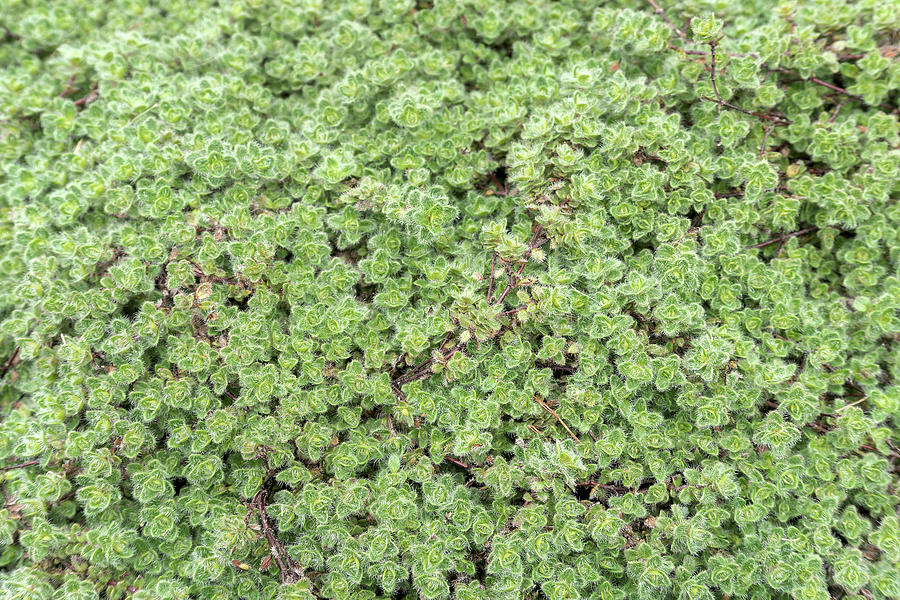

Woolly thyme ground cover complements upright herbs and can help keep weeding to a minimum by shading out their seeds. Hardy herbs are one of the best-kept secrets for the novice gardener. Be sure to use the clippings for cooking, potpourri, or in the bath. Trim back edges of the woolly thyme plant to encourage it to grow thicker.
#Woolly thyme thymus pseudolanuginosus how to#
Learning how to grow woolly thyme successfully and how to properly care for woolly thyme will include clipping and trimming. Remove the plant if possible, and amend the soil or plant in a different area. More likely, the browning of this plant is because of poor soil drainage. Woolly thyme care doesn’t necessarily include fertilization, although an all-purpose food may help specimens that are not responding to pruning or that are turning brown. It is almost a “plant it and forget it” type of herb. Other than that, and the occasional supplemental watering in the hottest months, the herb is best ignored. Protect it with frequent spraying of an organic horticultural soap. Woolly thyme ground cover may become snack food for aphids and spider mites. Once established, woolly thyme is drought resistant and care is minimal when plants are grown in soil with the right drainage. It will soon fill into a thick carpet of softness. Don’t worry if they look sparse at first. Plant the thyme in early spring after all danger of frost has passed for the best results with a spacing of 12 inches (30.5 cm.). If your soil is suspiciously boggy, amend it with generous amounts of sand or gravel worked into the top 6 to 8 inches (15-20.5 cm.). Rake out rocks and impurities and ensure proper drainage. When growing woolly thyme ground cover, plant in well-draining soil.
#Woolly thyme thymus pseudolanuginosus full#
This herb prefers full sun but will perform in partial shade. Keep in mind, however, that those started from seed could take up to a year before they are ready for transplant outdoors. Woolly thyme plants can be easily started from seed indoors, or from small plugs that are readily available at your local nursery. Thyme is a member of the mint family and as tenacious and sturdy as other members of the group, so when planting woolly thyme, put it in an area where the spread is desirable. This almost self-sustaining plant is a treat for the unmotivated or the just plain too busy gardener. Little is needed from the gardener with woolly thyme care. Woolly thyme plants are perennial and survive in USDA zones 4 to 7 but sometimes up to zone 9 with sheltered locations during the heat of the day. The plants are low growing, rarely getting higher than 12 inches (30.5 cm.) and spreading out to 18 inches (45.5 cm.) in width. In summer the plant adds a bonus and produces sweet little pink to purple flowers. Tiny leaves on woolly thyme ground cover are green and often edged with gray to silver. Once established, it tolerates dry conditions and spreads slowly, eventually creating a thick mat of foliage. Thyme is one of the more hardy herbs perfect for hot, sunny locations.

Here is more information on how to grow woolly thyme so your toes can enjoy the soft furriness, and your nose the sweet scent of this magical little plant. In fact, when stepped on, woolly thyme ground cover emits a pleasant fragrance. The herb doesn’t mind a bit of rough handling and can be trod upon with no ill effects. Try growing woolly thyme in the cracks between paving stones, along a gravel path, or as part of a xeriscape or drought-tolerant garden. Woolly thyme is a perennial herb, with medicinal and culinary uses in addition to ornamental use. There are plants you just want to touch, and a woolly thyme plant ( Thymus pseudolanuginosus) is one of them. (Co-author of How to Grow an EMERGENCY Garden)


 0 kommentar(er)
0 kommentar(er)
